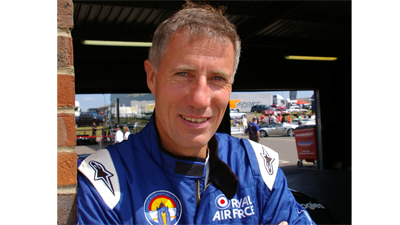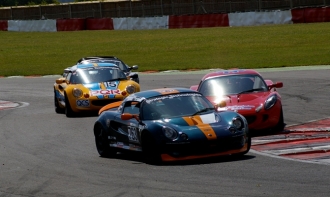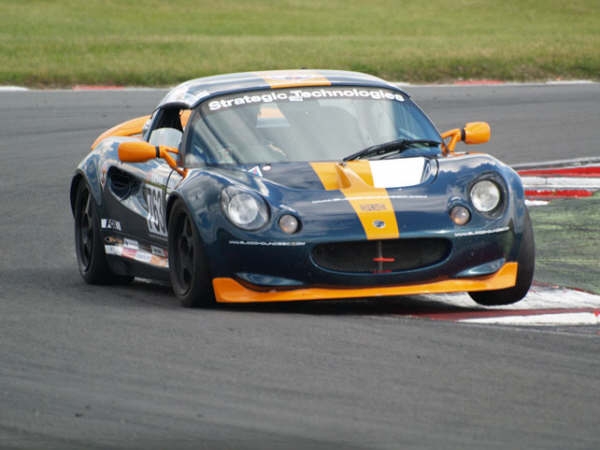
by Andy Green
I ended up racing at the Lotus Festival as a result of the terrific support shown to BLOODHOUND by a 1K Club Gold Member, Paul Golding, and ‘Lotus on Track’. Paul painted his race-prepped Lotus Elise in BLOODHOUND colours, sold some advertising space on the side to help the Project, and then asked me to drive it at the Festival. Only one snag now – I had no race licence and no experience. But how hard can it be...?
It turns out that going round corners can be quite difficult. I was lucky enough to have a few lessons from a couple of great instructors (thank you Malcolm and Andy) and then, with my newly-issued novice licence, I was ready for my first race. Come qualifying, I never got the clear lap that I wanted (this is only my first excuse, I’ve got loads more, just like a real racing driver....), so I was fairly well down the field. However, when my coaches pointed out that I was alongside drivers who had more racing experience (measured in years) than I had (measured in hours), I felt slightly better.
I had 2 races on the Sunday. Highlights were: avoiding all the accidents around me, only having one small accident myself (hit from behind, not my fault – told you I had lots of excuses), finishing 5 places up (first race) and 8 places up (second race), and executing my final overtaking manoeuvre in the last corner of the last race.
 So what does going round in circles all weekend have to do with driving BLOODHOUND SSC?
So what does going round in circles all weekend have to do with driving BLOODHOUND SSC?
A racing driver is continually trying to work out if he can go faster, if he’s at the maximum speed (i.e. at the car’s limit of grip) or (as quite often happened in my case!) if he’s going too fast and needs to rescue himself from yet another overly-ambitious manoeuvre. Now look at the Land Speed Record driver. A vehicle like BLOODHOUND will constantly be pushed off line by changes in surface resistance, cross winds, small asymmetries in thrust and aerodynamic load, etc. In addition, BLOODHOUND experiences a large nose-down pitch when the rocket fires, which pushes the weight onto the front wheels and makes the Car less stable. As speed increases, lateral wheel grip reduces, and the vehicle can become unstable (as happened to Thrust SSC): the driver now has to fight to keep it under control. Hence the LSR driver is asking the same questions as the racing driver – do I have plenty of control (through wheel grip and aerodynamic stability), am I reaching the limit of control or (worst case) am I losing control and what do I need to do to recover it?
The LSR driver gets very few chances to practice his skills for real, so the race track is a great place to develop a ‘feel’ for the limits of car stability and control. I had a very good demonstration of this during the practice session in the Lotus. Entering a high speed corner (the first corner, ‘Riches’, for those of you that know Snetterton), the rear of the car suddenly started to slide out of control. I didn’t really have to think about it – something was wrong with the rear grip, it doesn’t matter what – control the skid, start to slow down, finish the corner…. at which point I see that all 3 cars ahead of me have spun off the track (due to an oil spill on the first corner, we later discovered). This is what I came to here to learn: spotting the problem early enough to control the car, then reacting quickly enough to rescue it, even if everyone else spins off. My car handling and control have improved a lot, and it doesn’t really matter where I come in a race against these guys – our race starts next year.

Above: Who said that I wasn’t trying? Just as well that, unlike the Land Speed Record,
you don’t have to keep all of the wheels on the ground…


